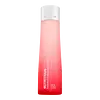What's inside
What's inside
 Key Ingredients
Key Ingredients

 Benefits
Benefits

 Concerns
Concerns

 Ingredients Side-by-side
Ingredients Side-by-side

Water
Skin ConditioningPropanediol
SolventNiacinamide
SmoothingGlycerin
HumectantButylene Glycol
HumectantLaminaria Saccharina Extract
Skin ProtectingPorphyridium Cruentum Extract
Skin ConditioningLactobacillus Ferment
Skin ConditioningHydrolyzed Rice Extract
Skin ConditioningPunica Granatum Extract
AstringentZinc PCA
HumectantDipotassium Glycyrrhizate
HumectantCamellia Sinensis Leaf Extract
AntimicrobialSodium Hyaluronate
HumectantCaffeine
Skin ConditioningNarcissus Tazetta Bulb Extract
AstringentCucumis Sativus Fruit Extract
EmollientSucrose
HumectantSodium Dilauramidoglutamide Lysine
HumectantCitric Acid
BufferingSodium Citrate
BufferingCaprylyl Glycol
EmollientSodium Hydroxide
BufferingPolyglyceryl-6 Caprylate
EmulsifyingPolyglyceryl-4 Caprate
EmulsifyingAcrylates/C10-30 Alkyl Acrylate Crosspolymer
Emulsion StabilisingPhenoxyethanol
PreservativeWater, Propanediol, Niacinamide, Glycerin, Butylene Glycol, Laminaria Saccharina Extract, Porphyridium Cruentum Extract, Lactobacillus Ferment, Hydrolyzed Rice Extract, Punica Granatum Extract, Zinc PCA, Dipotassium Glycyrrhizate, Camellia Sinensis Leaf Extract, Sodium Hyaluronate, Caffeine, Narcissus Tazetta Bulb Extract, Cucumis Sativus Fruit Extract, Sucrose, Sodium Dilauramidoglutamide Lysine, Citric Acid, Sodium Citrate, Caprylyl Glycol, Sodium Hydroxide, Polyglyceryl-6 Caprylate, Polyglyceryl-4 Caprate, Acrylates/C10-30 Alkyl Acrylate Crosspolymer, Phenoxyethanol
Water
Skin ConditioningHydroxylated Lanolin
EmollientParaffinum Liquidum
EmollientButyl Stearate
EmollientEthylhexyl Stearate
EmollientPolyglyceryl-2 Sesquiisostearate
EmulsifyingButylene Glycol
HumectantSorbitol
HumectantEthylene/Acrylic Acid Copolymer
Emulsion StabilisingPolybutene
Isodecyl Neopentanoate
EmollientPolyethylene
AbrasiveLanolin Wax
EmollientSqualane
EmollientAscorbyl Palmitate
AntioxidantTocopherol
AntioxidantCeresin
Emulsion StabilisingDimethicone
EmollientGlycol Stearate
EmollientStearamide Amp
Parfum
MaskingDehydroacetic Acid
PreservativeMagnesium Sulfate
Laureth-4
EmulsifyingPEG-20 Beeswax
EmulsifyingPEG-30 Dipolyhydroxystearate
EmulsifyingGlycerin
HumectantSodium Hydroxide
BufferingSilica
AbrasiveSorbic Acid
PreservativePolyaminopropyl Biguanide
PreservativePhenoxyethanol
PreservativeChlorphenesin
AntimicrobialCaramel
Cosmetic ColorantCI 19140
Cosmetic ColorantCI 15985
Cosmetic ColorantWater, Hydroxylated Lanolin, Paraffinum Liquidum, Butyl Stearate, Ethylhexyl Stearate, Polyglyceryl-2 Sesquiisostearate, Butylene Glycol, Sorbitol, Ethylene/Acrylic Acid Copolymer, Polybutene, Isodecyl Neopentanoate, Polyethylene, Lanolin Wax, Squalane, Ascorbyl Palmitate, Tocopherol, Ceresin, Dimethicone, Glycol Stearate, Stearamide Amp, Parfum, Dehydroacetic Acid, Magnesium Sulfate, Laureth-4, PEG-20 Beeswax, PEG-30 Dipolyhydroxystearate, Glycerin, Sodium Hydroxide, Silica, Sorbic Acid, Polyaminopropyl Biguanide, Phenoxyethanol, Chlorphenesin, Caramel, CI 19140, CI 15985
Ingredients Explained
These ingredients are found in both products.
Ingredients higher up in an ingredient list are typically present in a larger amount.
Butylene Glycol (or BG) is used within cosmetic products for a few different reasons:
Overall, Butylene Glycol is a safe and well-rounded ingredient that works well with other ingredients.
Though this ingredient works well with most skin types, some people with sensitive skin may experience a reaction such as allergic rashes, closed comedones, or itchiness.
Learn more about Butylene GlycolGlycerin is already naturally found in your skin. It helps moisturize and protect your skin.
A study from 2016 found glycerin to be more effective as a humectant than AHAs and hyaluronic acid.
As a humectant, it helps the skin stay hydrated by pulling moisture to your skin. The low molecular weight of glycerin allows it to pull moisture into the deeper layers of your skin.
Hydrated skin improves your skin barrier; Your skin barrier helps protect against irritants and bacteria.
Glycerin has also been found to have antimicrobial and antiviral properties. Due to these properties, glycerin is often used in wound and burn treatments.
In cosmetics, glycerin is usually derived from plants such as soybean or palm. However, it can also be sourced from animals, such as tallow or animal fat.
This ingredient is organic, colorless, odorless, and non-toxic.
Glycerin is the name for this ingredient in American English. British English uses Glycerol/Glycerine.
Learn more about GlycerinPhenoxyethanol is a preservative that has germicide, antimicrobial, and aromatic properties. Studies show that phenoxyethanol can prevent microbial growth. By itself, it has a scent that is similar to that of a rose.
It's often used in formulations along with Caprylyl Glycol to preserve the shelf life of products.
Sodium Hydroxide is also known as lye or caustic soda. It is used to adjust the pH of products; many ingredients require a specific pH to be effective.
In small amounts, sodium hydroxide is considered safe to use. However, large amounts may cause chemical burns due to its high alkaline.
Your skin has a natural pH and acid mantle. This acid mantle helps prevent harmful bacteria from breaking through. The acid mantle also helps keep your skin hydrated.
"Alkaline" refers to a high pH level. A low pH level would be considered acidic.
Learn more about Sodium HydroxideWater. It's the most common cosmetic ingredient of all. You'll usually see it at the top of ingredient lists, meaning that it makes up the largest part of the product.
So why is it so popular? Water most often acts as a solvent - this means that it helps dissolve other ingredients into the formulation.
You'll also recognize water as that liquid we all need to stay alive. If you see this, drink a glass of water. Stay hydrated!
Learn more about Water